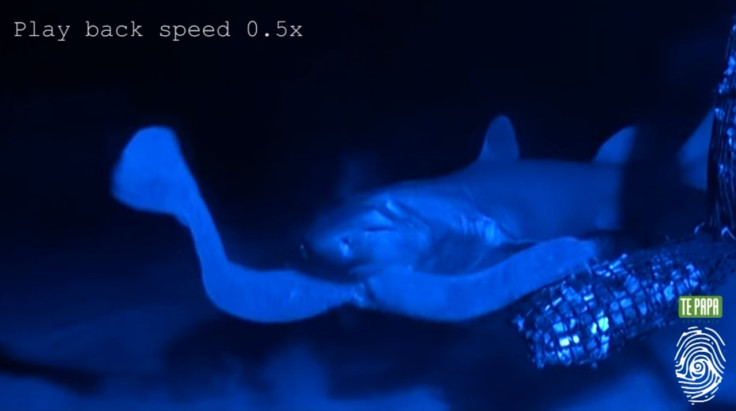See the ingenious way bizarre sea creature the hagfish protects itself from sharks
Hagfish have extremely loose skin which allows the animals to escape serious internal damage when bitten by predators.
Hagfish are bizarre, deep-sea creatures whose biology is so unusual that scientists have struggled to classify them. For one, they are the only known living animals to have a skull but no backbone, meaning no one is quite sure whether they are a type of vertebrate fish or a kind of transitional invertebrate – evolutionary precursors to traditional vertebrates.
The animals can go months without food and can even absorb nutrients through their skin – aided by their lack of scales. But one of their most peculiar features is their ability to produce large amounts of thick mucus when attacked, hence the nickname 'slime eel'.
It was previously thought that this slime, as well as its bite-resistant skin, were the hagfish's key defences against being eaten. But new research suggests that other strange properties of its skin may be more important. Scientists found that while hagfish skin is not resistant to punctures, it has beneficial characteristics that allow the animal to escape serious internal damage from penetrating teeth.
The skin – which can be thought of more like a skin sack – is very flaccid and only attached to the hagfish's insides in two places. This makes it loose enough that teeth essentially slide across it, meaning an attacker would find it difficult to cause serious damage.
"A sizable slack volume in hagfishes, combined with minimal attachment of the skin to the muscle, allows the body to slip out of harm's way even when the skin is punctured," said Douglas Fudge, associate professor of biological sciences at Chapman University and lead author of the study.
Once the hagfish has survived the initial bite, it then releases the thick mucus, which can clog up its predator's breathing apparatus. This combined defence strategy appears to have been incredibly successful, seeing as the hagfish has survived for around 300 million years and evolved very little in that time.
In fact, the animal is so adept at escaping attack that hagfish are rarely found in the stomachs of other fish and many predators simply avoid preying on them due to their low chances of success.
For the study, researchers set up a lab experiment to investigate how hagfish avoid damage from attacks. They created a spring-loaded model shark jaw fitted with Mako shark teeth to simulate a shark bite (Mako sharks are one of the few animals that will try their luck hunting a hagfish). The scientists then placed dead hagfish inside the model jaw and conducted puncture tests.

They found that the teeth punctured the skin every time. However, the muscle underneath was not damaged once. Because skin heals more easily than internal organs, it is likely the hagfish will survive the attack. The findings of the study are published in the Journal of the Royal Society Interface.
The researchers created their experiment after seeing a video showing hagfish using their slime defence in the wild. "This video really was the inspiration for our entire study," Fudge said.
The hagfish's biology also includes some other strange features.
It has huge amounts of blood relative to its size circulating in the cavity between its body and skin. So much so that it has multiple hearts to keep it all flowing.
Having large quantities of blood underneath a soft skin may not sound terribly beneficial for survival purposes, especially for an animal near the bottom of the food chain. However, the blood is pumped around the body at a pressure which is barely higher than the surrounding water – minimising the amount lost in an attack.
The animal can even tie itself in knots, a behaviour researchers think evolved to compensate for its lack of a properly formed lower jaw. By tying itself in a broad flat knot, a solid surface is created, helping the upper jaw to grip food.
Hagfish even provide a useful service to the ocean ecosystem, by consuming dead and decaying carcasses that fall to the sea floor, creating a clean environment for other fish.





















